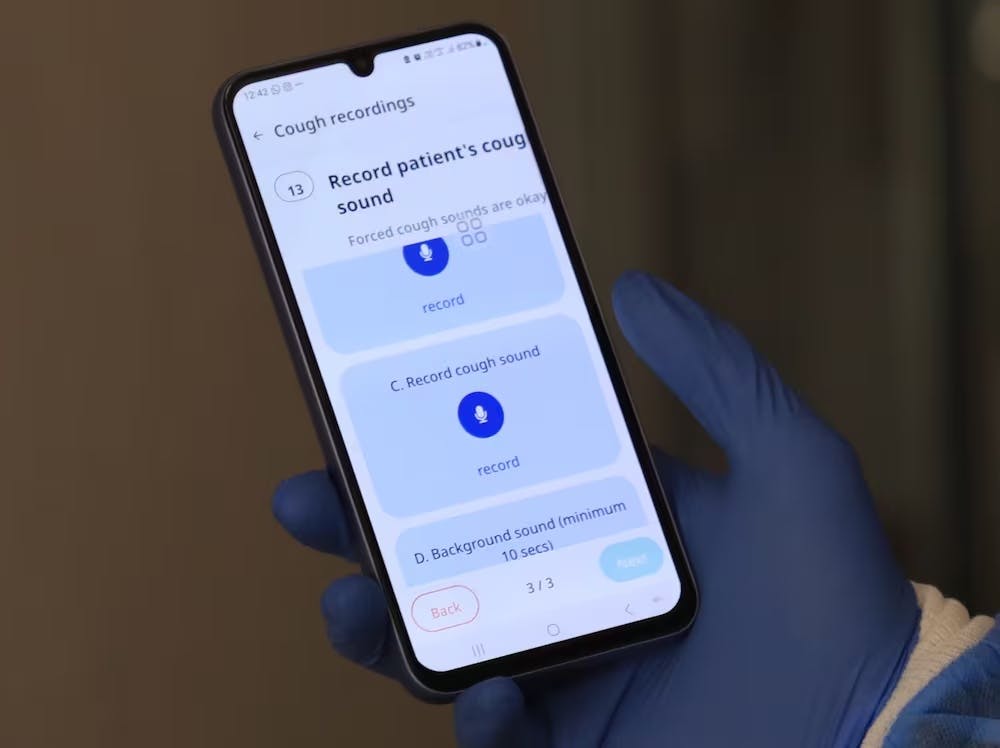AI and audio team up to fight severe respiratory disease in under-resourced areas
In December, we brought you a story about voice recordings. Specifically, we discussed a tool that uses ten-second voice clips to screen for Type 2 diabetes.
This week, we’re back to highlight the power of audio recordings to help screen for disease. But this time, we’re talking about recording a sound that’s perhaps more recognizable as a symptom of disease: coughing.
In the past few weeks, headlines from Kashmir to Kenya have reported on smartphone-based, AI-enabled voice recording apps that can help providers screen for one of the most dangerous respiratory diseases out there—tuberculosis (TB).
There are already plenty of ways to screen for TB, including chest x-rays and sputum tests. So where do these apps come into play? And what’s behind the explosion of these kinds of voice-based diagnostics?
Let’s get into it.

Revisiting TB testing
Last fall, a TB outbreak linked to bone grafts led us to discuss the trouble with TB testing.
When it comes to screening live patients for the infectious disease, there are two gold standards:
- A sputum culture (i.e., collecting phlegm for bacterial culture analysis)—results can take up to a week
- GeneXpert molecular testing—results in as soon as a few hours
Especially when it comes to the molecular rapid assay, TB can be caught quickly—improving recovery and minimizing transmission.
However, these tests are often unavailable in underresourced areas around the world. In that case, the World Health Organization (WHO) recommends symptom screening for TB diagnosis. Yet, studies have shown that symptom screening can still be hit or miss for many patients—especially since TB can often be confused for a host of other respiratory conditions in its early stages.
Per the WHO, the ideal triage TB triage product would be one that meets these criteria:
- Non–sputum-based
- Rapid
- Low-cost
- Easy to use with minimal infrastructure requirements
- Accurate (>90% sensitive, >70% specific)
That’s where the “acoustic biomarker” voice recording apps come in.
Of course, the apps that have emerged aren’t perfect in catching TB. For instance, the app from the research team in Kenya missed TB in about 30% of patients who ended up having the disease.
But these studies still present progress toward an accessible tool to catch more pulmonary TB cases. And with more such tools hitting the market (and our headlines), we hope we’ll see the technology evolve to be more and more effective.
The two trends behind the tech: COVID and AI
Beyond meeting this global health clinical need, where is this explosion of voice-recording diagnostics coming from?
This approach isn’t entirely new. Researchers have been working on acoustic biomarkers for at least three decades.
However, the COVID-19 pandemic drove interest in these applications up significantly.
MIT Technology Review identified 30–40 cough analysis startups that came up due to the pandemic. Some, like AudibleHealthAI, began due to COVID in 2020 and are now expanding to diseases like TB and influenza. Others, like ResApp Health, were around for years before COVID, but focused their business on COVID screening in 2020 and found a solid market foothold.
Another reason behind the growth of these tools? The past few years’ marked AI advancements. Accelerated data analysis via AI is the key to these tools’ accuracy and speed.
Plus, innovators have realized that, even if these tools can’t distinguish between the causes of a cough, cough identification in itself is useful.
Laryngologist Yael Bensoussan told MIT Technology Review that where this technology can be especially useful is in clinical trials, where researchers often have to rely on how well patients’ can remember and describe their coughing.
“It’s really hard to track cough,” she said. “It’s really easy to capture the frequency of cough from a tech perspective.”
Even Google’s new Pixel phones now have cough detection. Google Health product manager Jamie Rogers said, “It’s a sea change to have a common device, the smartphone, which everyone has sitting by their bedside or in their pocket to help observe your coughs.”
Maybe your phone will be noticing your coughs soon too, helping keep an eye on your respiratory health.